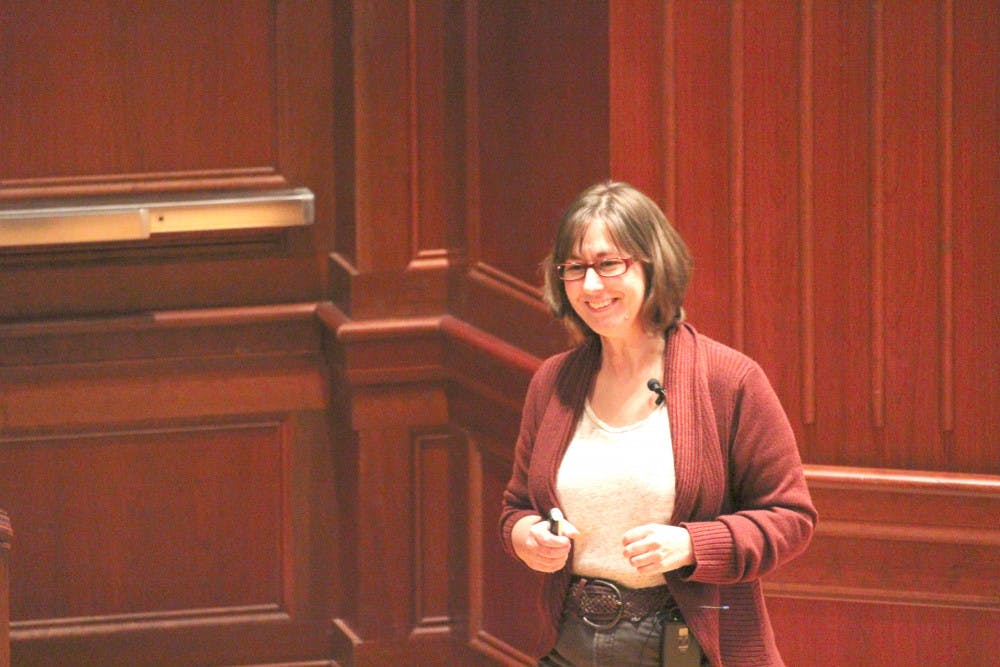By Victoria Herlocher
Correspondent

When Belinda Haikes, an assistant professor in the College’s Department of Art and Art History, moved to Fishtown, Pa., she was thrilled to have a small backyard — a rarity in the Philadelphia suburb. Haikes planted tomatoes and basil in hopes of starting a garden. Her neighbor asked if she planned on eating them. What Haikes learned next shocked her.
Haikes shared her story to students and faculty during a Brown Bag Lecture in Mayo Concert Hall on Friday, Nov. 13.
Haikes continued her story, explaining how her neighbor told her that there were dangerous levels of lead in the soil due to the town’s local smelting plant. Haikes was stunned that nobody had told her about this before she moved in. It was vital information that only passed by word of mouth.
“There is a history we’re not aware of, and this history is toxic,” Haikes said. Raising awareness in the community became Haikes’ primary goal after this incident.
Lead is a neurotoxin, and exposure to it can impair cognitive abilities in children and delay mental and physical development. Nationally, one in 40 people are exposed to dangerous levels of lead. In Fishtown, one in seven are exposed.
Haikes assembled a team of designers, scientists, students and community members to help in her mission to alleviate lead levels in Fishtown.
“I really think design can be powerful in changing the world and I hope you guys do, too,” Haikes said.
Haikes moved from South Africa to Canada and then to the United States. She encouraged audience members to notice the world around them and to be on the lookout for opportunities to improve the environment.
“Design is about communicating to people — it’s not about painting pretty pictures,” Haikes said.
She believes that with determination and ingenuity anyone is capable of designing a solution to a problem.
Haikes combines her passion for design with her interest in solving the problem facing her community.
Her team learned about a process called phytoremediation, a way of treating soil by introducing new plants into the environment. The plants help to lessen lead levels in the contaminated soil.
Phytoremediation is not the final answer to this problem. In order to completely mitigate the problem, all the soil would have to be extracted from the area. Haikes and her team are in the process of applying for grants that will be used to raise awareness in the community and ultimately resolve the lead problem in Fishtown.
“I want to make one backyard a little safer,” Haikes said. “It’s an imperfect plan, but it’s a plan.”







